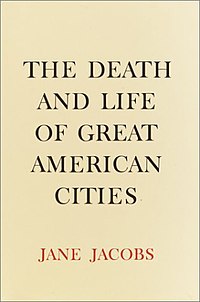
Photo from wikipedia
Abstract Understanding the relationship between mixed land use and urban vibrancy is vital in advanced urban planning applications. This study presents a Bayesian spatially varying coefficient (SVC) model to explore… Click to show full abstract
Abstract Understanding the relationship between mixed land use and urban vibrancy is vital in advanced urban planning applications. This study presents a Bayesian spatially varying coefficient (SVC) model to explore the spatially nonstationary relationship between mixed land use and urban vibrancy after controlling for other factors. We first use the convolutional conditional autoregressive prior to accommodate the ecological bias resulting from unobserved confounders. Then we develop our approach in the case of a single predictor to allow the spatially varying coefficient process. We further introduce a type of the Bayesian SVC model that considers the stratified heterogeneity of the outcome, allowing the coefficients to simultaneously vary at the local and subregion level. We illustrate the proposed model by conducting a case study in Shenzhen using mobile phone data, an officially registered point-of-interest (POI) dataset, and several supplementary datasets. The model evaluation results show that including spatially unstructured and structured component combinations can improve the model's fitness and predictive ability; additionally, considering spatial stratified heterogeneity can further enhance the model's performance. Our findings provide an alternative for measuring the variable local-scale association between mixed-use and urban vibrancy and offer new insights that broaden the fields of environmental science and spatial statistics.
Journal Title: International Journal of Geographical Information Science
Year Published: 2022
Link to full text (if available)
Share on Social Media: Sign Up to like & get
recommendations!